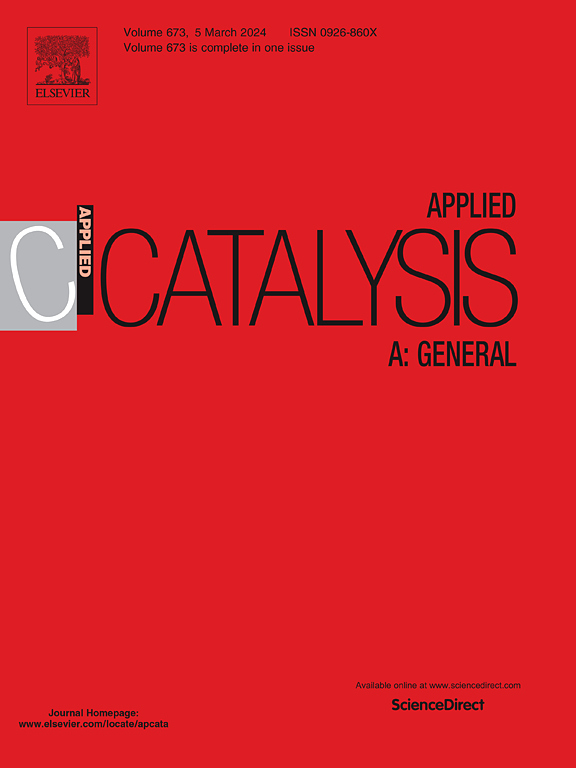Revealing the inhibitory reduction effect of Zr species on CoO to enhance the stability for furfural hydrogenolysis to 2-methylfuran
IF 4.7
2区 化学
Q2 CHEMISTRY, PHYSICAL
引用次数: 0
Abstract
High selective hydrogenolysis of furfural to 2-methylfuran over a metal oxide-based catalyst is promising and challenging. In this paper, a Zr-modified CoOx (Zr1Co6-325) catalyst was prepared via a simple co-precipitation/reduction and exhibited superior initial activity and remarkable circular stability during the hydrogenolysis of furfural (FUR) to 2-methylfuran (2-MF). As high as 71.2 % yield of 2-MF was achieved at 170 °C for 2 h and nearly no deactivation was found after five cycles, much better than those of reduced Co3O4 catalyst (Co3O4-250). Comprehensive studies demonstrated that the over-reduction of the CoO species during the reaction process was the main cause of catalyst deactivation. The introduction of Zr species, on the one hand, inhibited the over-reduction of CoO species during reaction processes, thereby enhancing the circular stability. On the other hand, the introduction of Zr species promoted the activation and dissociation of H2 and therefore improved the activity. This research unveiled the stabilizing effect of Zr species on CoO, providing guidance for the design of high-stable CoO-based catalysts.
揭示了Zr对CoO的抑制还原作用,增强了糠醛氢解制2-甲基呋喃的稳定性
在金属氧化物基催化剂上将糠醛高选择性氢解为 2-甲基呋喃是一项具有前景和挑战性的工作。本文通过简单的共沉淀/还原反应制备了一种 Zr 改性 CoOx(Zr1Co6-325)催化剂,该催化剂在将糠醛(FUR)氢解为 2-甲基呋喃(2-MF)的过程中表现出优异的初始活性和显著的循环稳定性。在 170 °C、2 小时的条件下,2-MF 的产率高达 71.2%,并且在五个循环后几乎没有发现失活现象,远远优于还原型 Co3O4 催化剂(Co3O4-250)。综合研究表明,反应过程中 CoO 物种的过度还原是催化剂失活的主要原因。一方面,Zr 物种的引入抑制了反应过程中 CoO 物种的过度还原,从而提高了循环稳定性。另一方面,Zr 物种的引入促进了 H2 的活化和解离,从而提高了活性。该研究揭示了 Zr 物种对 CoO 的稳定作用,为设计高稳定性 CoO 基催化剂提供了指导。
本文章由计算机程序翻译,如有差异,请以英文原文为准。
求助全文
约1分钟内获得全文
求助全文
来源期刊

Applied Catalysis A: General
化学-环境科学
CiteScore
9.00
自引率
5.50%
发文量
415
审稿时长
24 days
期刊介绍:
Applied Catalysis A: General publishes original papers on all aspects of catalysis of basic and practical interest to chemical scientists in both industrial and academic fields, with an emphasis onnew understanding of catalysts and catalytic reactions, new catalytic materials, new techniques, and new processes, especially those that have potential practical implications.
Papers that report results of a thorough study or optimization of systems or processes that are well understood, widely studied, or minor variations of known ones are discouraged. Authors should include statements in a separate section "Justification for Publication" of how the manuscript fits the scope of the journal in the cover letter to the editors. Submissions without such justification will be rejected without review.
 求助内容:
求助内容: 应助结果提醒方式:
应助结果提醒方式:


